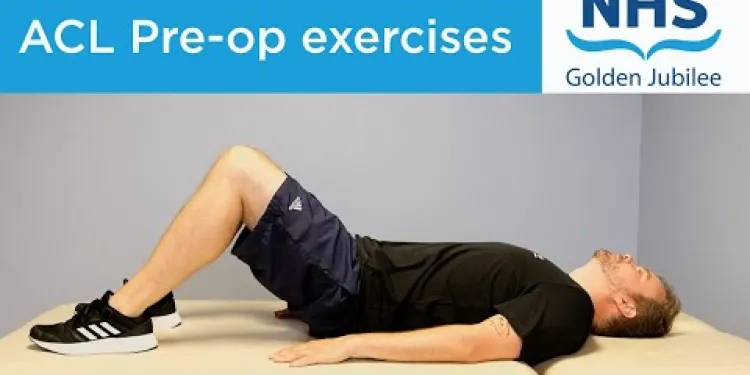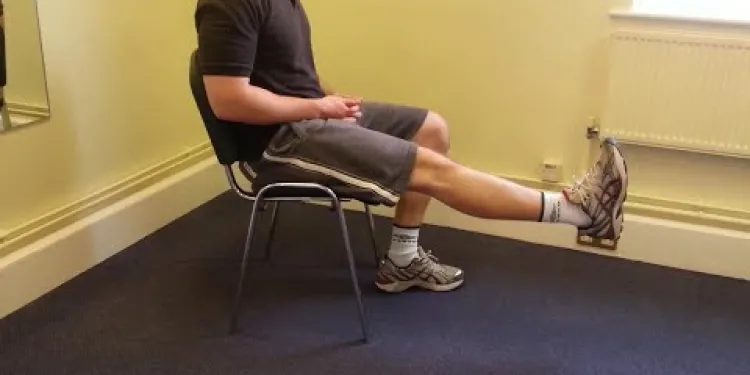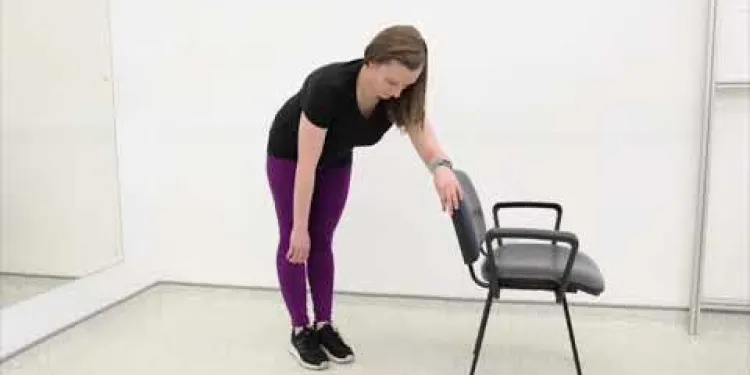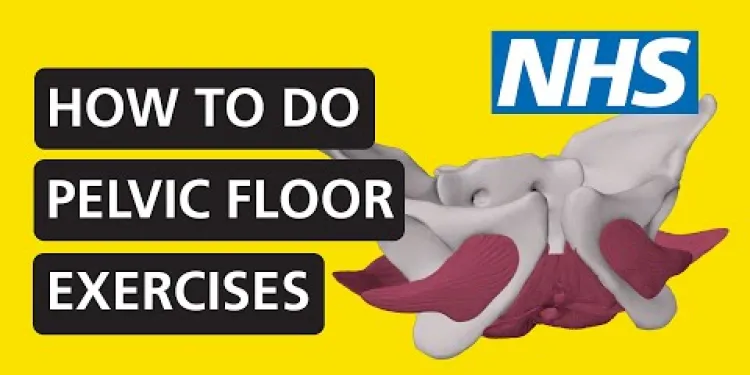Find Help
More Items From Ergsy search
-

Neck Exercises
Relevance: 100%
-

Neck Exercises
Relevance: 99%
-

Neck Care Exercises
Relevance: 94%
-

Advice on neck pain and whiplash
Relevance: 63%
-

Is it safe to exercise with a cold?
Relevance: 54%
-

Head and Neck Cancer Diagnosis
Relevance: 54%
-

Radiotherapy to the Head and Neck: A Guide for patients and their carers
Relevance: 47%
-

Facial exercise programme
Relevance: 46%
-

Royal Berkshire NHS Foundation Trust: Radiotherapy for head and neck cancers
Relevance: 43%
-

Shoulder Exercises 1
Relevance: 38%
-

Plantar Fascia Loading Exercise (High Load Exercise)
Relevance: 37%
-

ACL pre-operation exercises
Relevance: 36%
-

Knee Care Exercises
Relevance: 36%
-

Exercise in patients with a neuropathy
Relevance: 35%
-

ACL exercises post-operation
Relevance: 35%
-

Joint School - Hip Exercises
Relevance: 34%
-

Joint School - Knee Exercises
Relevance: 34%
-

Will I be able to engage in physical exercise?
Relevance: 34%
-

Frozen shoulder Pendular Exercises
Relevance: 34%
-

Elbow Eccentric Strengthening Exercise
Relevance: 33%
-

Exercise Routines for Busy Parents
Relevance: 33%
-

Can exercises help with labor preparation?
Relevance: 32%
-

Are there any exercises involved in air physiotherapy?
Relevance: 32%
-

How does exercise benefit pregnancy?
Relevance: 32%
-

Falls Prevention - strength and balance exercises
Relevance: 32%
-

Can exercise influence cortisol levels?
Relevance: 32%
-

Can I do high-impact exercises while pregnant?
Relevance: 32%
-

Can I do abdominal exercises during pregnancy?
Relevance: 32%
-

How to do pelvic floor exercises | NHS
Relevance: 32%
-

Is it safe to exercise outside during a heatwave?
Relevance: 32%
-

What exercises can I do during pregnancy?
Relevance: 32%
-

Can exercise trigger asthma symptoms?
Relevance: 32%
-

Physiotherapy Exercises following an Ankle Fracture
Relevance: 32%
-

Clearing Your Chest with Breathing Exercises
Relevance: 32%
-

Exercises for sciatica: spinal stenosis | NHS
Relevance: 31%
-

How does exercise impact heart failure?
Relevance: 31%
-

Exercises for sciatica: piriformis syndrome | NHS
Relevance: 31%
-

Can exercise help prevent gestational diabetes?
Relevance: 31%
-

Does physical exercise help people with CFS?
Relevance: 31%
-

How often should I exercise during pregnancy?
Relevance: 31%
Neck Exercises for Better Health
The Importance of Neck Exercises
Neck exercises are crucial for maintaining flexibility, strength, and overall health. With the increasing use of screens and digital devices, many people in the United Kingdom experience neck discomfort or pain. Regular neck exercises can alleviate these issues, improve posture, and prevent future problems.
Simple Neck Stretches
Begin with some basic stretches to loosen up the muscles. One effective stretch is the side neck stretch. Sit or stand up straight, gently tilt your head towards your shoulder, and hold the position for 15-30 seconds. Repeat on the other side. The chin tuck is another useful stretch: pull your chin backward, creating a 'double chin', and hold for a few seconds. This movement helps counteract forward head posture commonly seen in office workers.
Strengthening Exercises
Strengthening the neck muscles is vital to support the head and reduce strain. One beneficial exercise is the isometric neck exercise. Sit or stand with good posture, press your palm against your forehead and push your head forward while resisting with your hand. Hold for 5 seconds and repeat 3-5 times. Perform this exercise on the sides and back of the head for balanced strengthening.
Posture Correction
Improving posture plays a significant role in maintaining neck health. Practice a shoulder blade squeeze by sitting or standing up straight, pulling your shoulder blades together, holding for 5 seconds, and then releasing. Repeat this 10 times. Additionally, ensure your workstation is ergonomically set up – your screen should be at eye level, and your chair should support your lower back.
Incorporating Exercises into Your Routine
Consistency is key for the benefits of neck exercises. Incorporate these stretches and strengthening exercises into your daily routine, aiming to perform them at least once or twice a day, especially if you spend long hours sitting. You can also use reminders or phone alarms to prompt you to take short breaks and perform these exercises.
By regularly practicing these neck exercises, individuals in the United Kingdom can significantly reduce neck discomfort, improve their posture, and promote overall well-being.
Neck Exercises for Better Health
Why Neck Exercises Are Important
Neck exercises help keep your neck strong and flexible. Many people spend a lot of time looking at screens, which can make their neck hurt. Doing neck exercises regularly can help stop this pain, make your posture better, and prevent problems in the future.
Easy Neck Stretches
Start with simple stretches to relax your neck muscles. Try the side neck stretch: Sit or stand up straight, tilt your head to one shoulder gently, and hold it for 15-30 seconds. Then do it on the other side. Another stretch is the chin tuck: Pull your chin back to make a 'double chin', hold it for a few seconds, then release. This helps fix the forward head position you might get while working at a desk.
Neck Strength Exercises
It's important to make your neck muscles strong to support your head. Try the isometric neck exercise: Sit or stand up straight, press your palm on your forehead, and try to push your head forward while your hand pushes back. Hold for 5 seconds, then do this 3-5 times. Do the same for the sides and back of your head to make your neck muscles strong from all angles.
Improving Your Posture
Good posture is important for a healthy neck. Try the shoulder blade squeeze: Sit or stand up straight, pull your shoulder blades together, hold for 5 seconds, then let go. Do this 10 times. Also, make sure your computer is set up right. Your screen should be at eye level, and your chair should support your lower back well.
Making Exercises Part of Your Day
Do these neck exercises every day to get the best results. Try to do them once or twice a day, especially if you sit a lot. Use reminders or phone alarms to help you remember to take short breaks and do the exercises.
By doing these neck exercises regularly, you can help make your neck feel better, stand up straighter, and stay healthy.
Frequently Asked Questions
What are the benefits of neck exercises?
Neck exercises can help improve flexibility, reduce pain, increase range of motion, and prevent injuries. They can also alleviate tension and stress, which can contribute to neck stiffness and headaches.
How often should I do neck exercises?
It's generally recommended to perform neck exercises daily or at least several times a week for the best results. Consistency is key in improving and maintaining neck health.
Are neck exercises safe for everyone?
While neck exercises are generally safe, individuals with specific neck conditions or injuries should consult a healthcare professional before starting any exercise regimen to ensure it is appropriate for their situation.
Can neck exercises help with tension headaches?
Yes, neck exercises can help alleviate tension headaches caused by muscle strain and stiff neck muscles. They promote blood flow and help reduce muscle tension.
How can I perform neck stretches at my desk job?
Simple neck stretches such as neck tilts, rotations, and shoulder shrugs can be performed at your desk. Taking short breaks every hour to stretch can prevent muscle stiffness and improve posture.
Can neck exercises improve my posture?
Yes, regular neck exercises can strengthen the muscles around your neck and shoulders, promoting better alignment and posture, which can reduce strain and discomfort.
What are some simple neck exercises I can do at home?
Some simple exercises include neck tilts, neck rotations, shoulder rolls, and chin tucks. These can be done without any special equipment and take just a few minutes each day.
Do I need any special equipment for neck exercises?
Most neck exercises can be performed using just your body weight and a comfortable chair. However, tools like a resistance band can add variety and intensity to your routine.
Can neck exercises help with whiplash recovery?
Yes, neck exercises can aid in the recovery of whiplash by gradually strengthening the neck muscles and increasing flexibility. It's important to follow a healthcare professional's guidance during recovery.
Should I warm up before doing neck exercises?
Yes, doing a light warm-up such as gentle neck movements or a short walk can prepare your muscles for stretching and reduce the risk of injury.
How long should each neck exercise session last?
A typical neck exercise session can last 10-15 minutes. It’s better to do shorter, consistent sessions rather than long, infrequent ones.
Can neck exercises help with vertigo?
Certain neck exercises and stretches may help relieve symptoms of vertigo, especially if it's related to neck tension or cervical spine issues. However, it's important to consult with a healthcare provider for a proper diagnosis and treatment plan.
Can I do neck exercises if I have arthritis?
Gentle neck exercises can be beneficial for those with arthritis, helping to maintain mobility and reduce pain. It’s crucial to get advice from a physiotherapist or doctor to ensure the exercises are safe.
How do I know if I'm doing neck exercises correctly?
Proper form is essential. It's a good idea to watch instructional videos or consult with a physiotherapist. Signs you’re doing them right include feeling a stretch without pain and not forcing movements.
Are there neck exercises specifically for improving flexibility?
Yes, exercises like neck tilts, rotations, and side bends can enhance flexibility. Regularly performing these stretches can help maintain and improve your range of motion.
Why are neck exercises good for you?
Doing exercises for your neck can be really helpful. They can make your neck more flexible and stop it from hurting. These exercises can also make your neck move better and help you avoid getting hurt. Plus, they can make you feel less tense and stressed, so your neck doesn't get stiff or give you headaches.
Here are some tips:
- Stretch your neck gently every day.
- If something hurts, stop and rest.
- If you need help, ask a grown-up or a therapist.
- Try listening to calming music while you exercise.
How often should I do neck exercises?
It is good to move your neck every day. You can do easy neck exercises once or twice a day. If you have a sore neck, you can try doing exercises softly. Remember to stop if it hurts. If you are not sure, you can ask an adult or a doctor to help.
Here are some things to help you:
- Use a timer to remind you to exercise.
- Watch a video to see how to do neck exercises.
- Ask a friend or family member to do exercises with you.
It's good to do neck exercises every day or a few times a week. This helps make your neck strong and healthy. Doing it regularly is important!
Can everyone do neck exercises safely?
Some people may not be able to do neck exercises safely. It is important to ask a doctor or a healthcare professional first.
If you have neck pain or a sore neck, talk to a doctor before doing neck exercises.
Using videos or pictures can help you learn how to do the exercises correctly. It might also help to have someone guide you.
Neck exercises are usually safe. But if your neck hurts or is hurt, talk to a doctor before doing them. This helps make sure the exercises are okay for you.
Can neck exercises help with tension headaches?
Do exercises for your neck help with tension headaches?
Yes, doing simple neck stretches can help. Try these easy steps:
- Slowly move your head up and down.
- Turn your head side to side, like you are saying "no."
- Try to touch your ear to your shoulder on each side.
You can try using warm packs on your neck. Relax in a quiet room if you can.
Ask an adult or a doctor for help if you get stuck.
Yes, doing exercises for your neck can help if you have headaches because your neck muscles are tight or sore. These exercises get more blood to your neck and help your muscles relax.
How can I do neck stretches at my desk job?
Here are some easy ways to stretch your neck while sitting at your desk. These can help if your neck feels tight or tired:
- Side Stretch: Sit up straight. Slowly tilt your head to the right, bringing your ear towards your shoulder. Hold for a few seconds, then switch to the left side.
- Forward Stretch: Look straight ahead. Gently lower your chin towards your chest. Hold for a few seconds and then lift your head back up.
- Backward Stretch: Sit up tall. Slowly tip your head back, looking at the ceiling. Hold for a few seconds before returning to the start position.
- Look Over Your Shoulder: Turn your head to the right as if looking over your shoulder. Hold for a few seconds and then turn to the left side.
Remember to do these stretches gently, and do not force your neck. If it hurts, stop and take a break. Doing these stretches a few times during the day can help keep your neck relaxed and feeling good.
You might find it helpful to set a reminder or timer to stretch during the day. Listening to relaxing music can also make stretching more enjoyable.
Try easy neck exercises like moving your head side to side, looking over your shoulder, and moving your shoulders up and down. You can do these at your desk. Take a short break every hour to stretch. This will help stop your muscles from getting tight and help you sit up straight.
Can neck exercises help me stand up straight?
Yes, doing neck exercises often can make the muscles in your neck and shoulders stronger. This helps you stand up straight and feel less sore or uncomfortable.
Here are some tips to help you with these exercises:
- Do the exercises slowly and gently.
- Use a mirror to watch yourself and make sure you do them right.
- Ask an adult or a friend to help you if you need it.
What neck exercises can I do at home?
Here are some easy neck exercises:
- Neck Turns: Turn your head to one side, then the other. Do it gently.
- Neck Tilts: Tilt your head to one shoulder, then the other. Go slowly.
- Look Up and Down: Look up at the ceiling, then down at the floor. Move slowly.
Make sure to:
- Go slow and be gentle.
- Stop if it hurts.
- Ask an adult to help if you need it.
Use a timer to help you do each movement for a few seconds. Rest in between.
You can try some easy neck exercises. These are neck tilts, neck turns, shoulder rolls, and chin tucks. You don't need any special tools to do these exercises. They only take a few minutes each day.
Do I Need Special Things for Neck Exercises?
You do not need special things to do neck exercises. Here are some tips to help: - Find a soft place to sit or lie down, like a yoga mat. - Wear comfortable clothes. - Use a mirror to watch yourself and make sure you do it right. Ask someone to help if you need it.You can do most neck exercises using just your body and a comfy chair. But if you want to make it harder or try something new, you can use a resistance band.
Can neck exercises help you get better from whiplash?
Whiplash is when your neck gets hurt. This can happen in a car accident or if you fall down. Your neck might hurt or feel stiff.
Doing special neck exercises can help your neck feel better. These exercises are small and gentle movements for your neck. They can help make your neck strong again.
If your neck hurts, it is a good idea to talk to a doctor or a therapist. They can show you the right exercises to do. They might also give you a neck brace to wear.
Use things that can help you do the exercises, like watching a video or using simple pictures. Also, remember to do the exercises slowly and stop if it hurts.
Yes, doing neck exercises can help you get better from whiplash. These exercises make your neck muscles stronger and more flexible. It is very important to listen to a doctor's advice while you are getting better.
Do I need to warm up before neck exercises?
Yes, it's a good idea to warm up. Warming up helps your body get ready for exercise. It can keep you safe and make your neck feel better.
You can warm up by moving your neck gently. Try turning your head left and right. Tilt your head up and down slowly. Do this a few times.
Some people like to use a warm towel on their neck first. This can help relax the muscles.
These tips can help your neck stay safe and strong!
Yes, doing a small warm-up is a good idea. You can move your neck gently or take a short walk. This helps get your muscles ready for stretching. It also helps prevent getting hurt.
How long should you do neck exercises?
Do neck exercises for a short time. Aim for about 5 to 10 minutes. Make sure to take breaks if you need to.
Tips:
- Use a timer to keep track of time.
- Do the exercises slowly and gently.
A neck exercise session usually takes 10-15 minutes. It is better to do short exercises often, instead of long exercises now and then.
Can neck exercises help with feeling dizzy?
Neck exercises may help if you feel dizzy. They can make your neck stronger and more flexible. This may help your balance.
If you feel dizzy a lot, you should talk to a doctor. A doctor can tell you the best exercises for you.
Some tools and tips:
- Ask someone to help you with the exercises, like a friend or family member.
- Watch videos to see how to do the exercises.
- Take it slow, and stop if it hurts.
Some neck exercises and stretches can help if you feel dizzy because of tight neck muscles or neck problems. It is very important to talk to a doctor to find out what's wrong and how to fix it.
Can I do neck exercises if I have arthritis?
If your neck hurts because of arthritis, you might wonder if it's okay to do neck exercises. Here are some simple things to know and do:
- Ask Your Doctor: Before you start, talk to your doctor. They know what is best for you.
- Do Easy Exercises: Gentle stretches can help. Move slowly and do not push too hard.
- Listen to Your Body: If something hurts, stop doing it. Pain is your body's way of saying "be careful."
- Use Support: You can use tools like heat packs or a soft pillow to make things more comfortable.
Doing gentle exercises can help keep your neck from getting stiff. Always check with a doctor first to make sure it's safe for you.
Easy neck exercises can help if you have arthritis. They can help you move better and feel less pain. It is important to talk to a physiotherapist or doctor to make sure the exercises are safe for you.
Am I doing neck exercises right?
It is important to do exercises the right way. You can watch videos that show you how to do them or ask a physiotherapist for help. You know you're doing it right when you feel a gentle stretch and it doesn’t hurt. Don’t push your body too hard.
Can I do neck exercises to help make my neck move better?
Yes, doing exercises like neck tilts, rotations, and side bends can make you more flexible. If you do these stretches often, they can help you move better.
Useful Links
- Ergsy carfully checks the information in the videos we provide here.
- Videos shown by Youtube after a video has completed, have NOT been reviewed by ERGSY.
- To view, click the arrow in centre of video.
- Most of the videos you find here will have subtitles and/or closed captions available.
- You may need to turn these on, and choose your preferred language.
- Go to the video you'd like to watch.
- If closed captions (CC) are available, settings will be visible on the bottom right of the video player.
- To turn on Captions, click settings .
- To turn off Captions, click settings again.
More Items From Ergsy search
-

Neck Exercises
Relevance: 100%
-

Neck Exercises
Relevance: 99%
-

Neck Care Exercises
Relevance: 94%
-

Advice on neck pain and whiplash
Relevance: 63%
-

Is it safe to exercise with a cold?
Relevance: 54%
-

Head and Neck Cancer Diagnosis
Relevance: 54%
-

Radiotherapy to the Head and Neck: A Guide for patients and their carers
Relevance: 47%
-

Facial exercise programme
Relevance: 46%
-

Royal Berkshire NHS Foundation Trust: Radiotherapy for head and neck cancers
Relevance: 43%
-

Shoulder Exercises 1
Relevance: 38%
-

Plantar Fascia Loading Exercise (High Load Exercise)
Relevance: 37%
-

ACL pre-operation exercises
Relevance: 36%
-

Knee Care Exercises
Relevance: 36%
-

Exercise in patients with a neuropathy
Relevance: 35%
-

ACL exercises post-operation
Relevance: 35%
-

Joint School - Hip Exercises
Relevance: 34%
-

Joint School - Knee Exercises
Relevance: 34%
-

Will I be able to engage in physical exercise?
Relevance: 34%
-

Frozen shoulder Pendular Exercises
Relevance: 34%
-

Elbow Eccentric Strengthening Exercise
Relevance: 33%
-

Exercise Routines for Busy Parents
Relevance: 33%
-

Can exercises help with labor preparation?
Relevance: 32%
-

Are there any exercises involved in air physiotherapy?
Relevance: 32%
-

How does exercise benefit pregnancy?
Relevance: 32%
-

Falls Prevention - strength and balance exercises
Relevance: 32%
-

Can exercise influence cortisol levels?
Relevance: 32%
-

Can I do high-impact exercises while pregnant?
Relevance: 32%
-

Can I do abdominal exercises during pregnancy?
Relevance: 32%
-

How to do pelvic floor exercises | NHS
Relevance: 32%
-

Is it safe to exercise outside during a heatwave?
Relevance: 32%
-

What exercises can I do during pregnancy?
Relevance: 32%
-

Can exercise trigger asthma symptoms?
Relevance: 32%
-

Physiotherapy Exercises following an Ankle Fracture
Relevance: 32%
-

Clearing Your Chest with Breathing Exercises
Relevance: 32%
-

Exercises for sciatica: spinal stenosis | NHS
Relevance: 31%
-

How does exercise impact heart failure?
Relevance: 31%
-

Exercises for sciatica: piriformis syndrome | NHS
Relevance: 31%
-

Can exercise help prevent gestational diabetes?
Relevance: 31%
-

Does physical exercise help people with CFS?
Relevance: 31%
-

How often should I exercise during pregnancy?
Relevance: 31%


